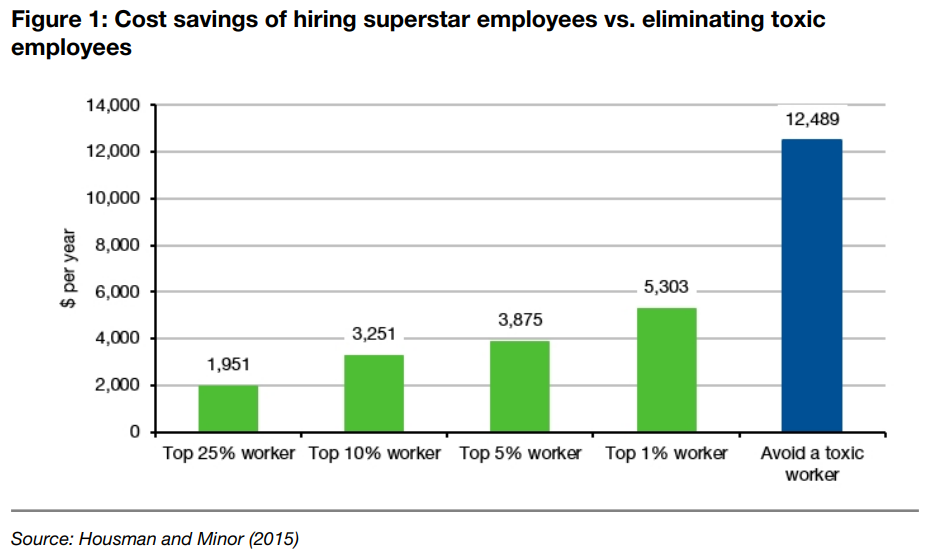Thought of the week – Toxic workers are bad for business
Charles Ellis wrote one of the best investment books ever. His “Winning the Loser’s Game” explains neatly why investors should try to eliminate the losers from their portfolio rather than try to chase superstar investments that do extremely well. Yet, both in the investment world and when running a business, this lesson is generally not heeded.

In business, executives keep on talking about attracting the best talent, but has any of these executives ever done the math about the benefits of a superstar employee versus the costs of a toxic employee? Well, Michael Housman and Dylan Minor have. They looked at the costs toxic employees create for a business. Mind you, we are not talking about your regular underperformer, but about truly toxic employees who eventually will create legal liabilities for companies or will have to be dismissed due to bullying, harassment, or other serious offences. In essence, they looked at the worst 5% of the workforce who get terminated for such offences.
What are the costs of such toxic workers? On the one hand, the costs are direct costs like lawsuits and the need to recruit and train replacements. But there are also other costs like the lower quality of work toxic workers produce on average. To be sure, toxic workers on average work faster, but they do so at the expense of quality of work, so on a quality-adjusted basis, toxic workers are less productive than non-toxic workers. Looking at company data from 11 US companies and their employees, Housman and Minor find that avoiding a toxic employee and replacing him (or her) with an average worker saves a company some $12,500 in costs on average.
Let’s compare this to the benefits of hiring the best talent. Superstar employees tend to be more productive and produce higher-quality work. Thus, their output is effectively worth more than the output of an average employee to the company. If a company loses a superstar worker, it has to hire more than one average worker to generate the same output. Thus, superstar employees create indirect cost savings for a company by reducing the need to hire people and increasing productivity.

The chart shows how much these indirect cost savings are worth for different levels of superstar employees. We see that even if a company manages to hire a top 1% superstar employee the cost savings are still only about half of the cost savings of replacing a toxic employee with an average employee.
That should give executives and HR managers a lot of food for thought. Could it be that you are focusing on the wrong end of the distribution? Wouldn’t it be better to identify the people in your workforce that make life miserable for others around them or may become a liability for the company? Getting rid of them may in the long run be more profitable than chasing the best talent and paying top dollar for them.
Thought of the Day features investment-related and economics-related musings that don’t necessarily have anything to do with current markets. They are designed to take a step back and think about the world a little bit differently. Feel free to share these thoughts with your colleagues whenever you find them interesting. If you have colleagues who would like to receive this publication please ask them to send an email to joachim.klement@liberum.com. This publication is free for everyone.

